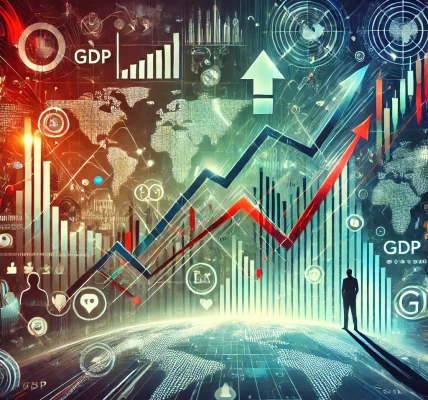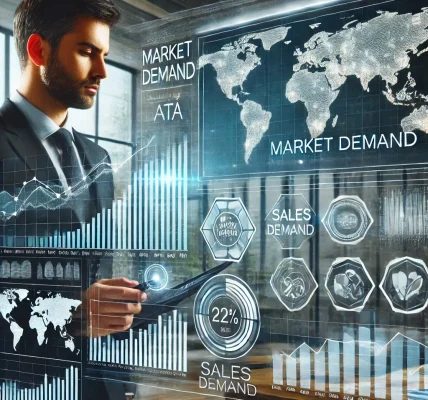In the world of commerce, businesses operate under two major models: B2B (Business-to-Business) and B2C (Business-to-Consumer). Each model has its own unique market dynamics, sales strategies, customer behaviors, and growth opportunities. Understanding these differences is essential for businesses aiming to maximize revenue and expand in their respective markets.
In this article, we will explore the key differences between B2B and B2C markets and highlight the opportunities available for businesses in both domains.
1. Understanding B2B and B2C Markets
What is B2B (Business-to-Business)?
B2B businesses sell products or services directly to other businesses rather than consumers. Examples include software providers, manufacturing suppliers, and professional service firms.
- Examples: SAP (enterprise software), IBM (technology solutions), and Salesforce (CRM software).
- Customer Type: Businesses, enterprises, wholesalers, and institutions.
- Typical Transactions: Bulk orders, long-term contracts, higher value deals.
What is B2C (Business-to-Consumer)?
B2C businesses sell directly to end consumers. These businesses focus on personal consumption rather than bulk buying or organizational needs.
- Examples: Amazon (e-commerce), Nike (apparel), and Netflix (entertainment services).
- Customer Type: Individual consumers.
- Typical Transactions: Single purchases, impulse buying, and price-sensitive transactions.
2. Key Differences Between B2B and B2C Markets
a) Target Audience & Buying Behavior
- B2B: Customers make rational, research-driven decisions based on business needs, ROI, and efficiency.
- B2C: Consumers often make emotional purchases influenced by branding, trends, and price.
b) Sales Cycle & Decision-Making Process
- B2B: Longer sales cycle due to higher investments and approvals from multiple stakeholders.
- B2C: Shorter sales cycle with quick decision-making, often based on personal preference.
c) Marketing Strategies
- B2B: Content marketing, SEO, webinars, whitepapers, relationship-building.
- B2C: Social media marketing, influencer marketing, promotions, and advertising.
d) Pricing & Transaction Volume
- B2B: High-value transactions with bulk pricing and contract-based sales.
- B2C: Lower-value transactions, usually one-time purchases at a retail price.
e) Customer Relationship Management
- B2B: Focuses on long-term relationships, customer retention, and personalized service.
- B2C: Aims at attracting a high volume of customers with brand loyalty and engagement.
3. Growth Opportunities in B2B and B2C Markets
Growth Opportunities in B2B Markets
- Digital Transformation: Businesses are adopting AI, automation, and cloud solutions, creating demand for tech-driven B2B solutions.
- E-commerce Expansion: B2B e-commerce is expected to grow significantly, allowing businesses to reach global clients.
- Data-Driven Decision Making: Companies leveraging big data and analytics have a competitive edge in understanding market trends.
- Niche Markets: Specializing in high-demand industries like cybersecurity, SaaS, and renewable energy can lead to strong B2B growth.
- Subscription-Based Models: Many B2B companies are adopting subscription services for consistent revenue streams.
Growth Opportunities in B2C Markets
- E-commerce Boom: Online shopping trends continue to dominate, making digital presence crucial for B2C brands.
- Personalization & AI: Brands leveraging AI to provide personalized recommendations see higher engagement and sales.
- Sustainable & Ethical Consumption: Consumers are increasingly drawn to eco-friendly and socially responsible brands.
- Omnichannel Marketing: Integrating physical stores with online experiences enhances customer engagement.
- Mobile Commerce: The rise of mobile shopping and digital wallets is transforming B2C buying behaviors.
4. Future Trends in B2B and B2C Markets
B2B Market Trends:
- Increased use of AI and machine learning for sales predictions.
- Greater reliance on automation and CRM tools for customer retention.
- Growth of virtual and hybrid B2B events for networking and business development.
B2C Market Trends:
- Augmented reality (AR) and virtual reality (VR) integration for interactive shopping experiences.
- Expanding influencer marketing to drive product awareness.
- Greater emphasis on direct-to-consumer (DTC) models bypassing traditional retailers.
5. Conclusion: Choosing the Right Strategy for Growth
Understanding the distinctions between B2B and B2C markets is crucial for businesses aiming to succeed in their respective domains. While B2B markets prioritize long-term relationships, high-value transactions, and rational buying decisions, B2C markets focus on branding, consumer experience, and quick purchasing behavior.
By leveraging technology, data analytics, and customer-centric strategies, both B2B and B2C businesses can unlock growth opportunities and remain competitive in an evolving market landscape.




